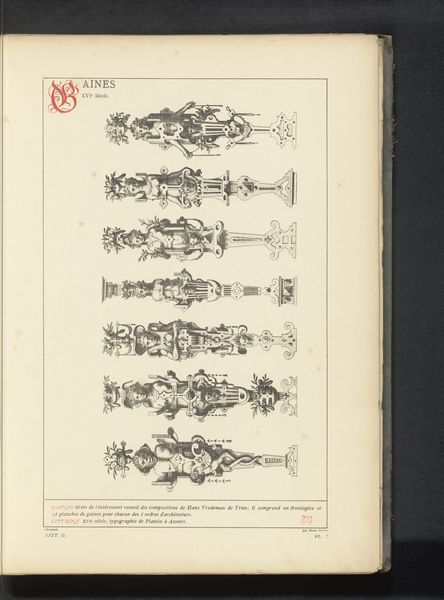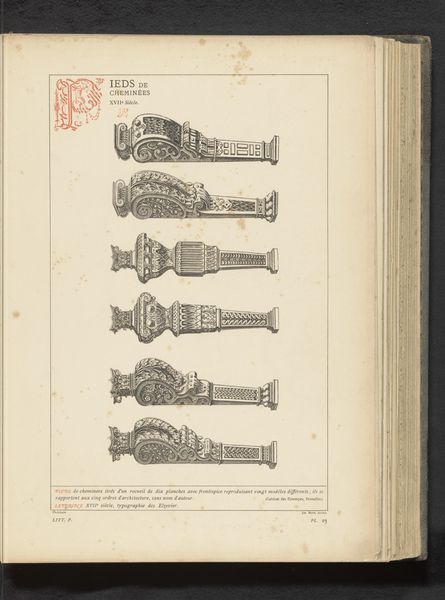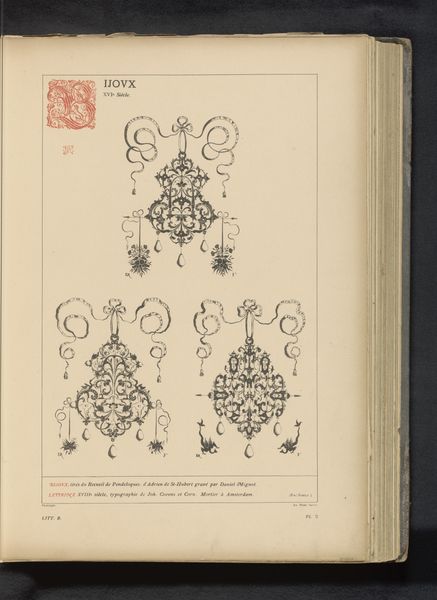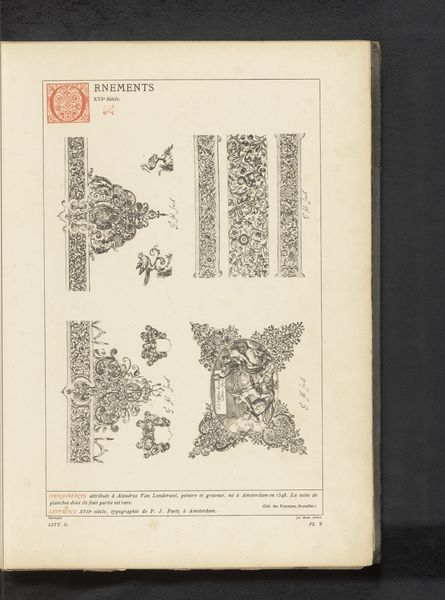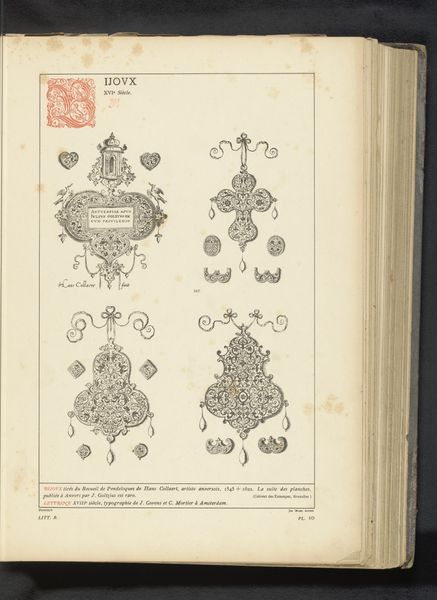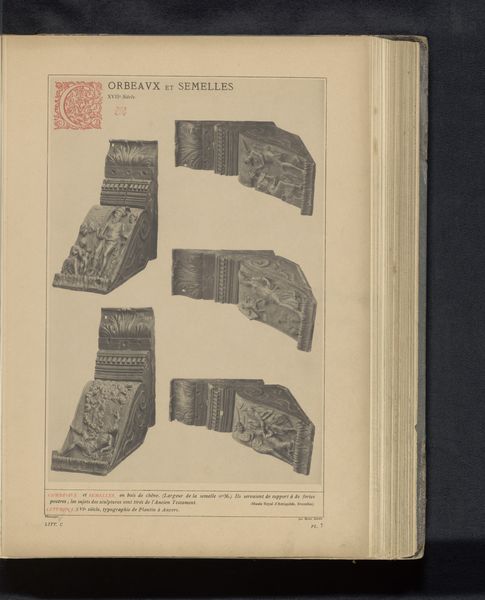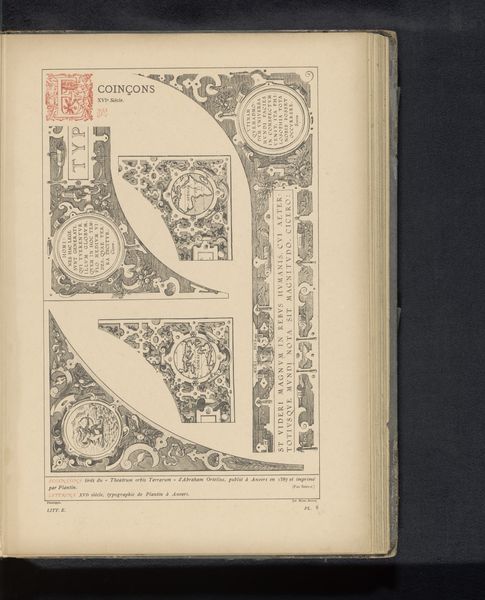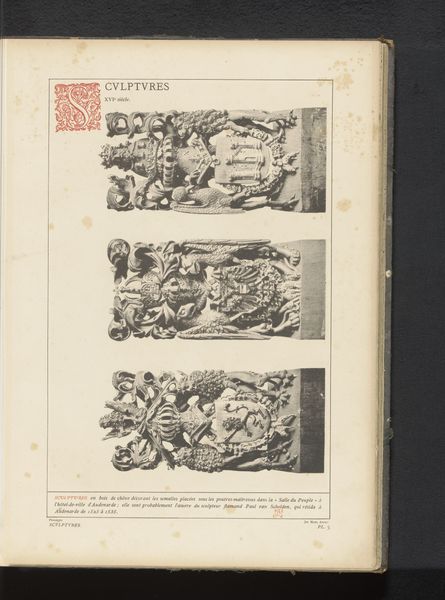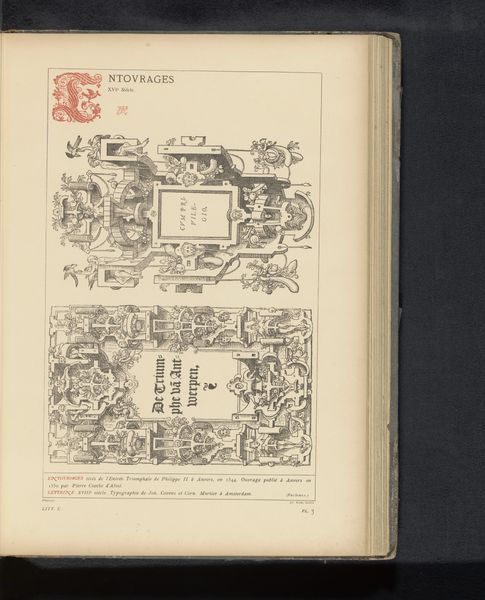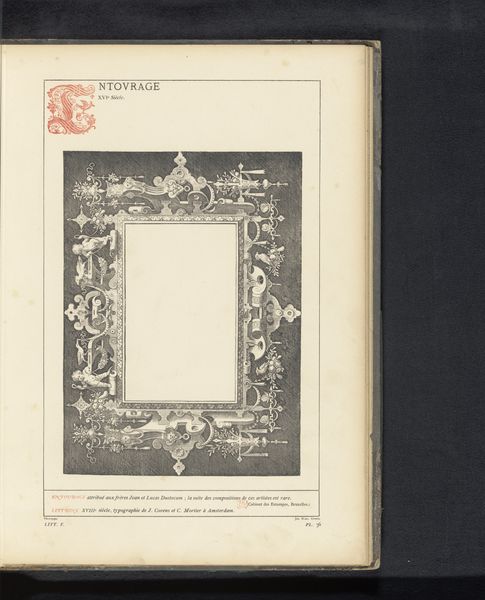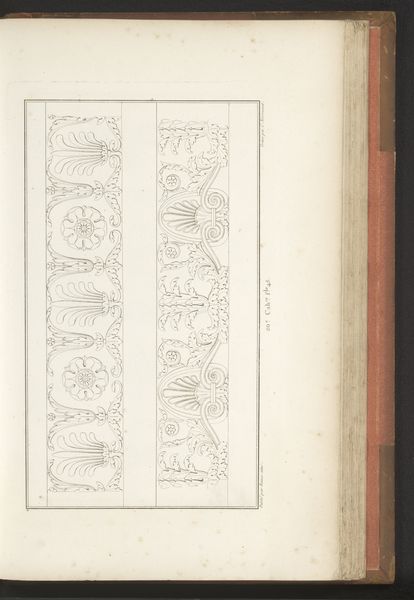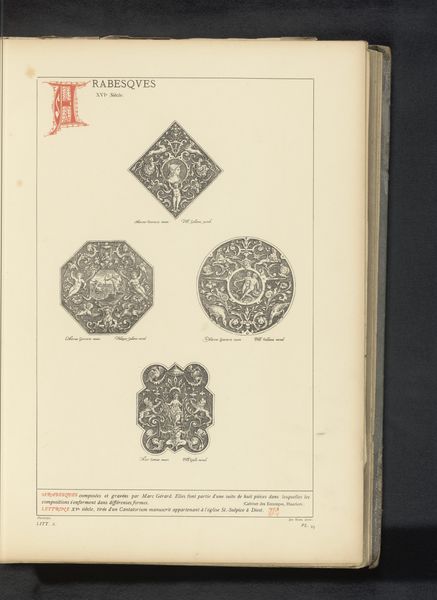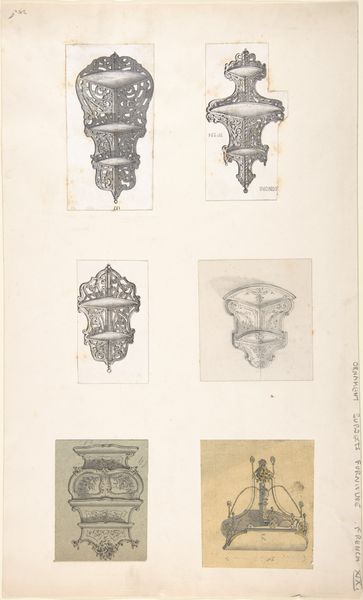
Reproductie van een ontwerp met veertien consoles en kraagstenen door Paul en Hans Vredeman de Vries before 1880
0:00
0:00
drawing, print, paper, engraving, architecture
#
drawing
# print
#
paper
#
form
#
11_renaissance
#
geometric
#
line
#
engraving
#
architecture
Dimensions: height 342 mm, width 230 mm
Copyright: Rijks Museum: Open Domain
Editor: Here we have an engraving printed on paper, titled "Reproductie van een ontwerp met veertien consoles en kraagstenen door Paul en Hans Vredeman de Vries," dating from before 1880. I'm immediately struck by the repetitive, almost mathematical nature of the forms. What design principles or relationships jump out to you when you look at this print? Curator: Indeed. Notice how the composition orchestrates a study in variation. Each console, while sharing a common function, is rendered with a unique interplay of geometric shapes and delicate ornamentation. The line work itself is masterful. Observe the crispness and precision with which each form is delineated, achieving a remarkable level of detail and visual interest. Editor: I see what you mean about the line work. Do you think that contrast, the push and pull between simple shapes and those embellishments, gives it that visual energy? Curator: Precisely. The contrast establishes a visual hierarchy. Your eye is drawn to the areas of dense ornamentation, then released to travel along the clean, unadorned lines. Consider, also, how the placement of these consoles contributes to the overall composition. It encourages a reading from left to right and top to bottom, emphasizing the individual character of each console. Editor: It's like they're both individuals and a chorus at the same time. What would you say is the key takeaway regarding how form and function play out? Curator: Function, in this case architectural support, serves as the starting point. Yet, the Vredeman de Vries duo transcend pure utility, transforming the necessary into the aesthetically compelling. Editor: That really highlights how design can elevate even the most functional objects into something beautiful. Thanks, this was quite enlightening. Curator: The pleasure was all mine. This detailed study offers a fascinating window into the design aesthetics of the Renaissance and its enduring influence on subsequent architectural styles.
Comments
No comments
Be the first to comment and join the conversation on the ultimate creative platform.
